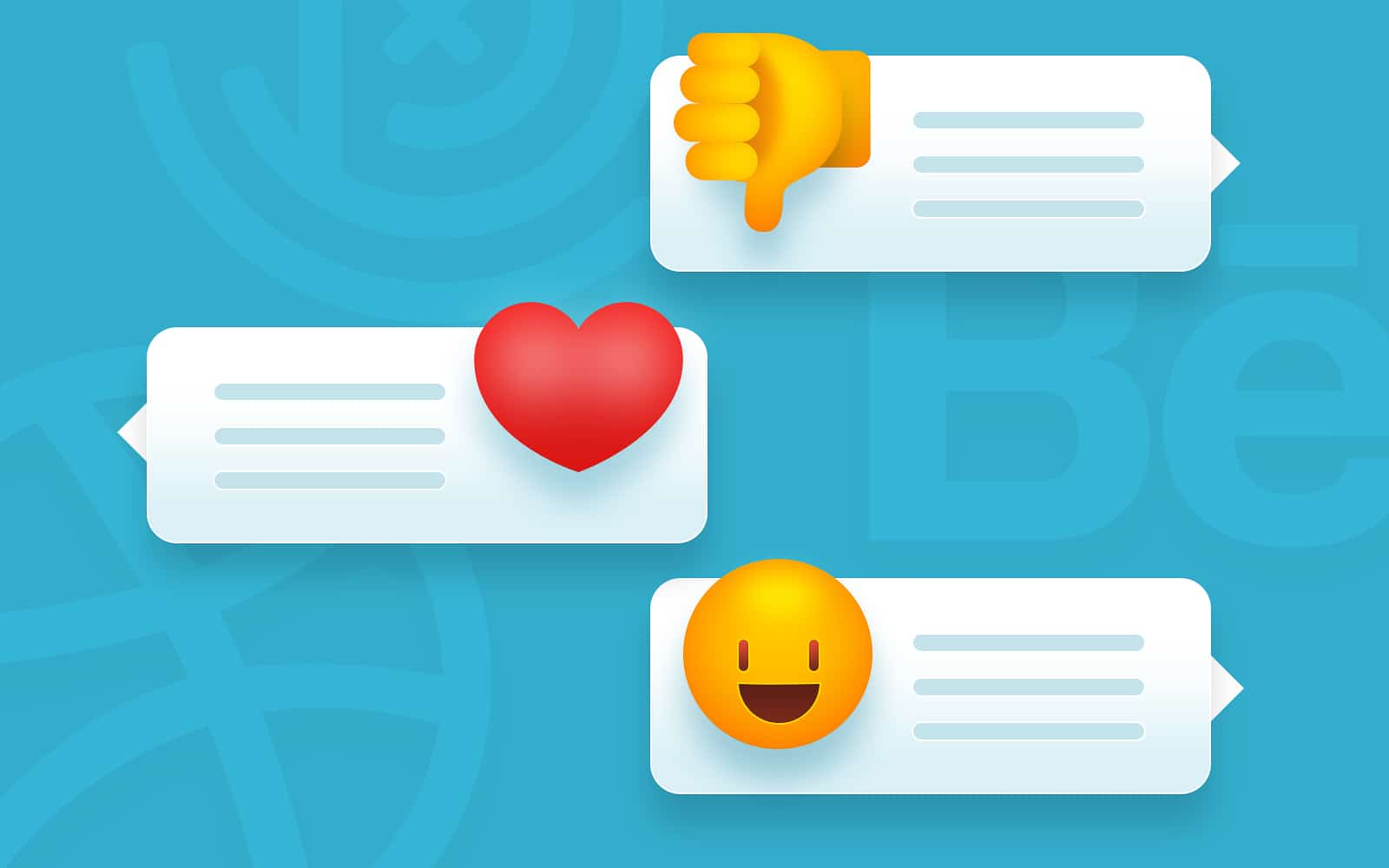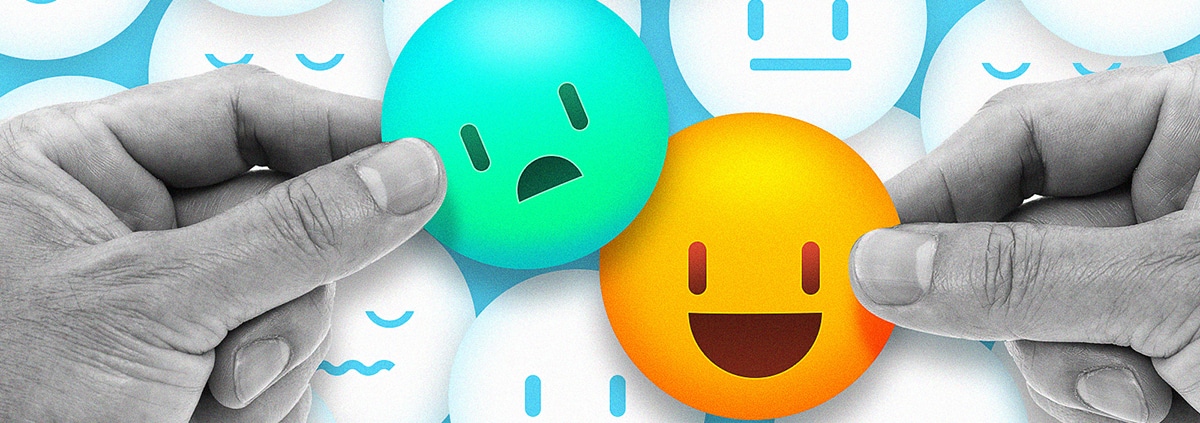So… You have worked on the project, you maybe have been sharing it with your colleagues, or just doing it alone if you are a freelancer. Now is the time to share it with the client. You are anxious about it, if he is going to like your work, or not. Are you going to feel awesome and fulfilled, or feel like crap, and like you’re worth nothing.
As a creative, one of the most ( if not the hardest ) parts of the job is getting feedback on your work. Most of us are introverted, we just like to do the creative part. We want to be left alone, and just do what makes us happy ( most of the time ).
Humans are emotion-driven, so if somebody comments on your work in a negative way, you take it personally, It’s like they are judging you. If they are not happy with your work, they are not happy with you…
At least this is how it feels like.
As a designer and business owner, I still struggle with this as well. I’ve learned a lot in the last couple of years, so it’s easier to manage. Sometimes you just need to take a break, take a few minutes, hours, days away from the project, and the feedback that you got. Most of the time when your head is clear, you will find that the feedback may be constructive, helpful, or just from a different point of view that differs from yours.
Design is subjective. You can like something that I don’t, and the other way around. If it’s appropriate, and done with “taste”, most of the time you will achieve an approval.
Also, always take into account that if you are working with small to medium businesses ( sometimes corporations ), the business owner is heavily attached to the brand. He or she may have a vision, but they have a hard time explaining it to you. Your job as a designer is to do the best you can, to deliver something appropriate that is suitable for the client.
Clients, try this next time you give your feedback
Dear clients,
We know that you are heavily invested in your business, you built your company/startup/one-man shop, from the ground up, and it was HARD WORK.
We designers know this. We are here to help, let’s work as a team on figuring out how we can make your business goals achieved. You don’t need to give immediate feedback once you have seen the design proposed to you, take your time. You probably have thoughts, you can share them of course, just take into consideration that feedback like: Red is my favorite color can we try that instead? Or this font is too small, It kinda looks like, it reminds me of…
These are not very helpful. Try to explain as best as you can, what do you like, and what’s not working for you. The outcome of the final should be one that really works well with the business, not just your own preferences.
“My wife thinks that pink would be a better choice of color” without context, or WHY, is not a feedback, it’s just a fact that your wife loves the color pink.
If her argument would be:
“Since our main target audience are teenagers, and we want to have a girly vibe and feel to our brand, I think the color palette should reflect this. Maybe one option could be pink.”
Remember, you have provided a brief, answered some questions ( hopefully before the work started ), IF the work reflects these instructions, then you should stay objective and work on a solution.
Nobody likes to hear the bad news first.
Okay, maybe from the first go you are not 100% happy, which is OK, this is a process, it takes some time. Just like you, we ( the creatives ) are not mind readers, try to take the strong points, the one you like and start with dos, then the ones you don’t like. Your comments will be much better received. ( and it will not hurt as much… ). Also it will help build a positive relationship, and trust, you won’t kill the motivation. If you only talk about the negative, the one receiving will have doubts on every step of the way. “I’m not sure this is good… But hopefully it will make the client happy” – could be one of the many things on his mind.
So, you see? From problem solving, we went to make the client happy no matter what, because I don’t want to feel the rejection again.
Take a day, or how much time is necessary, and review it again. If you loved their work, and you were absolutely sure that the designer / agency who you picked does a great job, and their portfolio has convinced you, THAN please take the time to understand, and learn the work that has been done. Their target is to do a great job, so they will land more clients. They have as much to lose as you if they do a lousy job. ( nobody wants an unhappy client )
PRO tip: If you have the possibility, always show your work in person, or on a live call. It makes a huge difference, sometimes words written down, sound weird. I had this happen multiple times, when receiving a mail, I was like… WTF? Why does he talk to me like that…I will call him and fire him, I don’t want to work with this person again. And I took a deep breath, ok… let’s call him tomorrow. And in 99% of the cases, it was just a misunderstanding, and everything was fine.
You need to see reactions, hear the tone of voice etc, it’s a game changer.

Receiving feedback from your peers ( other creatives )
What’s the meaning of being a creative person and not sharing your work with others?
It really doesn’t matter if you are a designer, photographer, painter etc. Once you make something you like, ( who else beside me, hates everything they do later on? ) you will print it or post it online.
Most of the time you will share this with your community: 500px, Dribbble, Behance etc.
It’s hard to describe the awesome feeling when you get comments like: “This is Awesome”, “Wow, good job”, “Nice work” and so on ( most of the feedback on social media ). I can’t argue that I don’t feel the same, even if I know that this does not help me to be better at my job. I get a quick dopamin shot, but that’s all. No real added value.
Even if it hurts at the moment, constructive ( not hating ) feedback is WAY better. It will put a thought in your head, and if you really love what you do, you will take this info and apply it to your work and get better.
There is always room to grow. Even if you have put in the 10k hours and you consider yourself a professional in your field, you can learn something, trust me.
I have feedback from projects made 4-5 years ago that I still think about.
Again, just like in the case when receiving feedback from clients on paid projects, be open minded, think about the constructive comments. Maybe there is something there.
How to handle the feedback
Once you’ve got the client’s input, you can now take what you have learned from his feedback, apply it to the current project, and also make sure to apply it to your next projects as well, if needed.
Sometimes the feedback you get is not what you’ve expected, not talking only about the part that the client is not convinced, but also about how the feedback is given. Always keep in mind that in most of the cases your client does not have a creative background, nor the vocabulary. Your job is to explain, and educate him. So don’t be waiting on feedbacks like: “I like the color palette, but can we try a serif typeface, I think it would be more suitable, than the sans-serif that you used.”, or “I don’t like the ligature”, or “Can we try a ½ layout here instead of ⅓ ”. It will be probably like “Let’s do ferrari red”, “It does not click, for some reason. Can we try a different approach?”
What you can do is start a conversation, and put in the effort of digging deeper, and asking the right questions. The solution is there, just need to hang in there, and not let your emotions interfere.
Be open minded, if you share 10 designs, or you have 10 paid projects and most of them get some kind of negative input ( or more negative then positive ), you probably need to take a step back and think about what can be improved. My rule is to revisit my designs the next day, most of the time I catch things that can be improved, before sharing it with others, or sending it for feedback.
After years of being a professional, I still struggle with this myself, I’ve just learned to manage it. It’s normal. Just hang in there.
